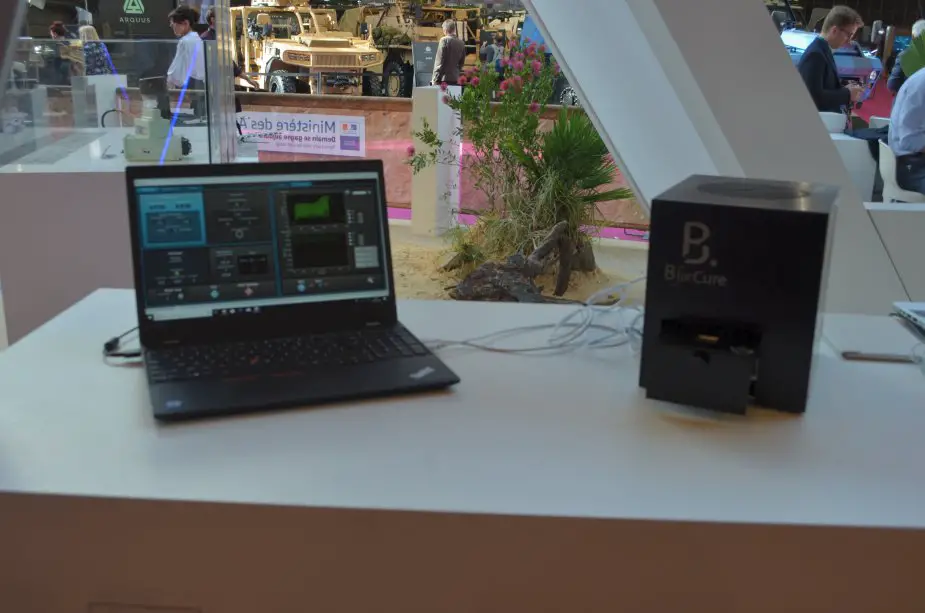The FASTGENE II demonstrator has been unveiled as a world premiere on the booth of the French Ministry for Armed Forces at the Eurosatory exhibition. The French Army will soon be to rely on it as a pathogen detection system.

FASTGENE II demonstrator (Picture source Army Recognition)
The biological threat weighs more and more on the military forces. In this type of attack, the faster the detection, the better the medical care. To cope, the armies will soon be able to rely on Fastgene II, the fastest pathogen detection system in the world. It identifies them in less than 15 minutes, four times faster than existing solutions.
This innovation is developed by the French start-up Elvesys in partnership with Assistance Publique - Hôpitaux de Paris (AP-HP) and INSERM. It is supported by the French Defense Procurement Agency (DGA - Direction générale de l’armement) and will be integrated as a technological brick in an upstream study program to develop a platform demonstrator for biological and chemical analysis.
The secret of this technology is to push the limits of gene amplification. Amplification allows to "magnify" infinitely small genetic information in order to better read them. The aim: to detect the presence of pathogens in a sample. So far, this process takes about an hour.
The stroke of genius is to have developed an innovation to accelerate this phenomenon. In 2012 the DGA identified the potential of the technology and decided to support it. Three years later, the demonstration is done in the laboratory: the DNA of the pathogens can be detected in less than 15 minutes and a single test is sufficient to search for several tens of pathogen species potentially present in the sample. The DGA therefore has continued its partnership with the aim of developing a compact field-based detection device, no bigger than a suitcase. The first demonstrator has just been launched and is to be discovered at Eurosatory.
The civil applications of this technology are numerous. Fastgene II could upset the practices in the medical field. The company is developing several applications with its partners, the Institut Pasteur and the support of the Investissement d'Avenir and Bpifrance program.
Some examples: help with diagnosis and prescription by the rapid identification of the infectious agent and its possible resistance to antibiotics, personalized prevention of the risk of maternal-fetal transmission during delivery, use in general practice for help with early diagnosis...














